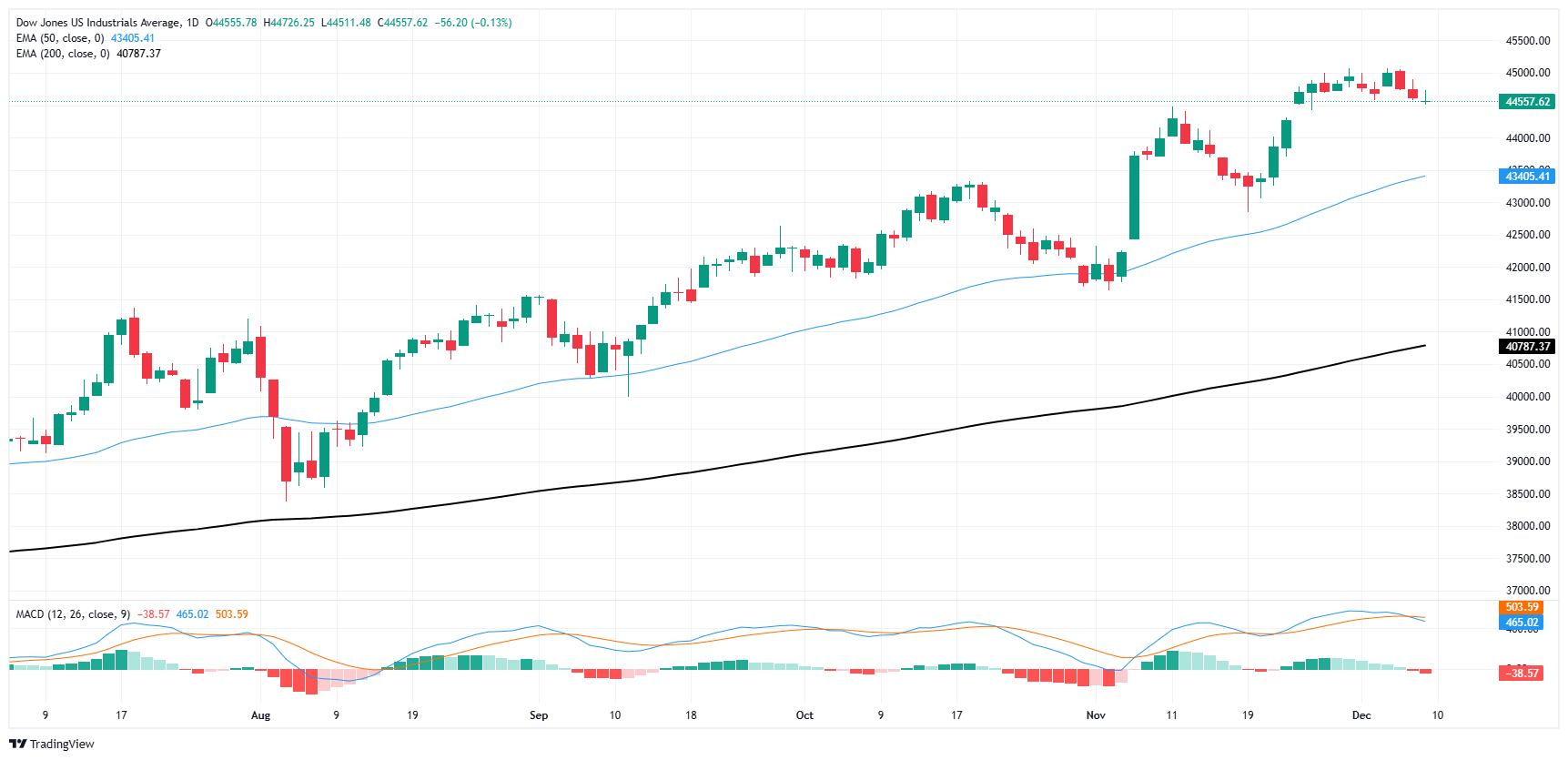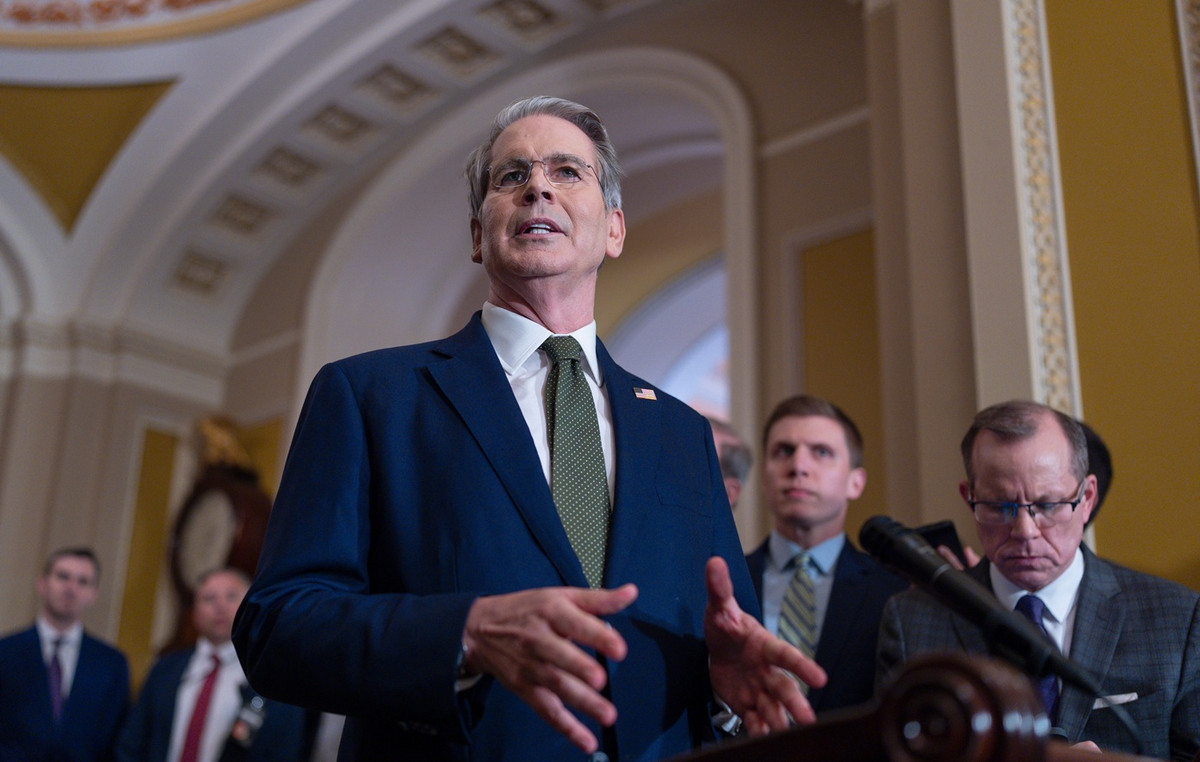- The Dow Jones marked familiar territory near 44,600.
- Stock traders took a cautious stance following a policy change from China.
- Investors will get a respite from the high-impact data until the mid-week CPI inflation numbers.
The Dow Jones Industrial Average (DJIA) held near 44,600 as stocks begin the new trading week on a calm note. Markets balked early on Monday after China announced its first official monetary policy change in 13 years. However, risk appetite was hampered by geopolitical risks from the Middle East and South Korea.
Political turbulence dampened investor sentiment during Monday’s overnight session. Chinese political leaders signaled a looser monetary policy strategy for next year, paving the way for the Chinese government to directly pursue additional stimulus policies. Stocks exposed to Chinese markets rallied strongly at the start of the week. However, not everything is rosy on the Chinese front: Chinese authorities have declared an antitrust investigation against Nvidia (NVDA) for alleged violations of obscure antitrust laws. The move is seen as retaliation against US sanctions aimed at crippling China’s access to advanced chip technology.
South Korea’s latest political turmoil is evolving into complete stalemate after South Korean President Yoon Suk Yeol’s attempted coup d’état via martial law was roundly rejected by the South Korean Parliament. Despite being roundly rejected by political leaders within South Korea, lawmakers were unable to reach a consensus on what to do in response, with an initial impeachment vote falling short of the required threshold. Members of South Korea’s opposition party are immediately calling for another impeachment vote.
Tensions in the Middle East remain at a high level following the overthrow of the Syrian government of Bashar al-Assad. The newly deposed dictator has fled to Moscow following the overthrow of a decades-old regime. Further destabilization in the Middle East has boosted crude oil prices but kept overall investor sentiment in the region in check.
Investors will be keeping an eye on a new release of the US Consumer Price Index (CPI) scheduled for Wednesday, with a light agenda for the start of the week. US CPI inflation is expected to rise again on an annualized basis in November. Median market forecasts expect US CPI inflation to rise to 2.7% year-over-year compared to 2.6% in October.
Dow Jones News
The Dow Jones stock dashboard is balanced on Monday with listed stocks split roughly in half between winners and losers. Boeing (BA) rose 4.5% to test $161 per share after announcing more layoffs in Washington, staying in line with the company’s plans to cut 10% of its global workforce in a bid to show investors who are willing to do whatever it takes to achieve profitability and reduce costs, even if it means crippling their ability to fulfill customer orders in the future.
Dow Jones Price Forecast
The Dow Jones post-Trump election rally is again running into lukewarm investor sentiment, and the main stock index is primed for further declines after bulls ran out of steam near the main 45,000 price level . Despite congestion hampering bullish momentum, price action is yet to commit to a southward move.
The 50-day EMA is rising through 43,400, providing a convenient floor for bidders to return to if bearish momentum wins the battle. The Dow Jones is up 18% so far this year, but is primed for a correction after rising 7.6% in November alone.
Dow Jones Daily Chart
The Dow Jones FAQs
The Dow Jones Industrial Average, one of the world’s oldest stock indices, is made up of the 30 most traded securities in the United States. The index is weighted by price rather than capitalization. It is calculated by adding the prices of the securities that comprise it and dividing them by a factor, currently 0.152. The index was founded by Charles Dow, also founder of the Wall Street Journal. In recent years it has been criticized for not being sufficiently representative, since it only follows 30 companies, unlike broader indices such as the S& P 500.
There are many factors that drive the Dow Jones Industrial Average (DJIA). The main one is the aggregate performance of its component companies, revealed in quarterly corporate earnings reports. US and global macroeconomic data also contribute, influencing investor sentiment. The level of interest rates, set by the Federal Reserve (Fed), also influences the DJIA, as it affects the cost of credit, on which many companies largely depend. Therefore, inflation can be a determining factor, as well as other parameters that influence the decisions of the Federal Reserve.
The Dow Theory is a method for identifying the main trend of the stock market developed by Charles Dow. A key step is to compare the direction of the Dow Jones Industrial Average (DJIA) and the Dow Jones Transportation Average (DJTA) and only follow trends where they are both moving in the same direction. Volume is a confirmation criterion. The theory uses elements of maximum and minimum analysis. The Dow theory proposes three phases of the trend: accumulation, when the smart money begins to buy or sell; public participation, when the general public joins the trend; and distribution, when the smart money abandons the trend.
There are several ways to trade the DJIA. One of them is to use ETFs that allow investors to trade the DJIA as a single security, instead of having to buy shares of the 30 companies that comprise it. A notable example is the SPDR Dow Jones Industrial Average ETF (DIA). Futures contracts on the DJIA allow traders to speculate on the future value of the index, and options provide the right, but not the obligation, to buy or sell the index at a predetermined price in the future. Mutual funds allow investors to purchase a portion of a diversified portfolio of DJIA securities, providing exposure to the global index.
Source: Fx Street
I am Joshua Winder, a senior-level journalist and editor at World Stock Market. I specialize in covering news related to the stock market and economic trends. With more than 8 years of experience in this field, I have become an expert in financial reporting.







